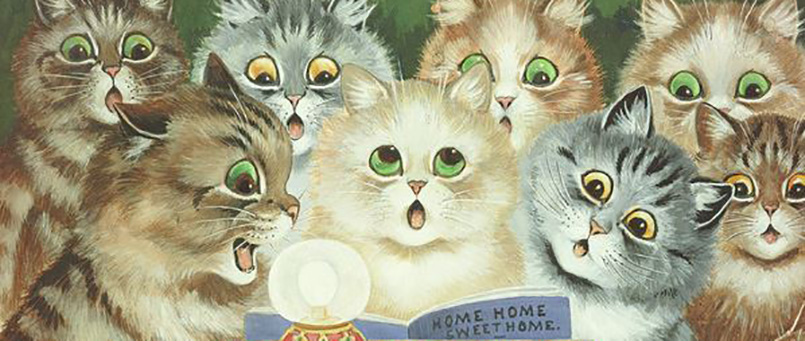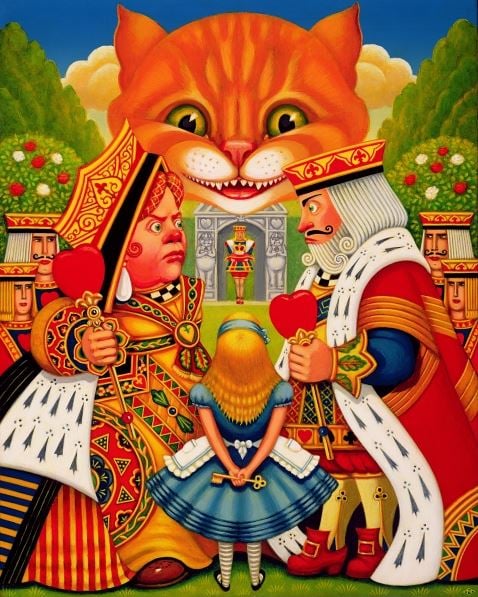
Famous Cats from Literature
While we celebrate our animals every day of the year, unfortunately National Pet Month (01 April – 04 May) has come to a close. You may have read our previous post on the 10 Reasons Why We Love Dogs, well now it’s time to celebrate our feline friends.
Artists have often looked to cats for artistic inspiration. As docile creatures, they make for great sitters and are occasionally incorporated in paintings depicting domestic life. Famous artists who loved their cat companions include Salvador Dali, Marcel Duchamp, Henri Matisse, Frida Kahlo, Andy Warhol, and Tracey Emin. Their cats occasionally feature in their works and in doing so they add a personal insight into the artists’ lives.
Cats also feature widely in literature, particularly in fairy tales and folklore. They are often able to talk, and can sometimes even play music and perform acts of heroism! We had a look at our favourite anthropomorphic cat characters within literature:
The Owl and the Pussycat, 2009 by P J Crook / Private Collection / Bridgeman Images
‘The Owl and the Pussycat’ is a poem written in 1871 by Edward Lear, and it makes up part of his book ‘Nonsense Songs, Stories, Botany, and Alphabets’. It was written for a young three year old girl, the daughter of Leah’s friend poet John Addington Symonds.
The poem has a very whimsical nature, and there are even a few made-up words such as ‘runcible’ in the verses. In the song-like poem, Lear tells the story of a very unlikely pairing – the Owl and the Pussycat, who set off on an adventure in a pea green boat and are eventually married by a turkey in the land ‘where the Bong-tree grows’.
Funnily enough, the Owl and the Pussycat also end up having children together (it is not specified how) in a sequel that was published in 1938. The children were united in their love of eating mice! Sadly though, their mother cat died from falling out of a tree.
You can watch a charming animated film version (1952) of The Owl and the Pussycat in the Bridgeman Footage Archive.
Puss in Boots, 1870 by Gustave Doré (1832 – 1883), Engraving for Charles Perrault, ‘Fairy Tales’ / Private Collection / Bridgeman Images
This is a feisty cat indeed! He is also referred to as ‘Master Cat’ or ‘The Booted Cat’, but ‘Puss in Boots’ is his English name. He was born from a European literary fairy tale about a cat that uses cunning trickery and deceit in order to obtain wealth, power and the hand in marriage of a princess for his poor and low-born master.
The French-Italian story seems to have first come about c.1550-1553, with several authors accredited for the cat’s tale, including Giovanni Francesco Straparola, Charles Perrault, and Giambattista Basile. The story was published by Barbin in 1697 in a collection of eight fairy tales by Perrault called ‘Histoires ou contes du temps passé‘; the book was an immediate success and is still popular today!
Perrault’s version is in fact the most renowned exemplary tale in all of Western folklore of an animal as a helper. However, helpful animals have appeared centuries before its publication, in an extensive collection of Indian folk tales called ‘Katha Sarit Sagara’.
The popular cat has been adapted in media various times over the years, by such iconic figures as the Brothers Grimm, Walt Disney, Hayao Miyazake and Dreamworks. Who isn’t familiar with the charming character of the animated Puss in Boots (voiced by Antonio Banderas) in the film ‘Shrek’?!
The King and Queen of Hearts, 2010 by Frances Broomfield (contemporary artist) / Private Collection / Bridgeman Images
The Cheshire Cat is best known for his mischievous appearances and philosophical musings in Lewis Carroll’s popular novel ‘Alice in Wonderland’. He has since been featured in a vast and diverse range of contexts, including political cartoons, television, business and science studies. He is most recognisable for the fact that his body occasionally disappears and for his iconic big grin. His tropes of mystique and disappearance have been used in scientific literature as a metaphor for various phenomena.
The idea of grinning like a Cheshire cat is believed to have been a reference to the abundance of dairy farms in Cheshire (Carroll’s birthplace), and so the cat grins because it has plenty of milk and cream! There are also several reports that the Cheshire Cat was inspired by a 16th century sandstone carving of a grinning cat in St. Wilfred’s Church, close to Cheshire.
What are your favourite feline characters in literature and /or films? Share them with us in the comments.



